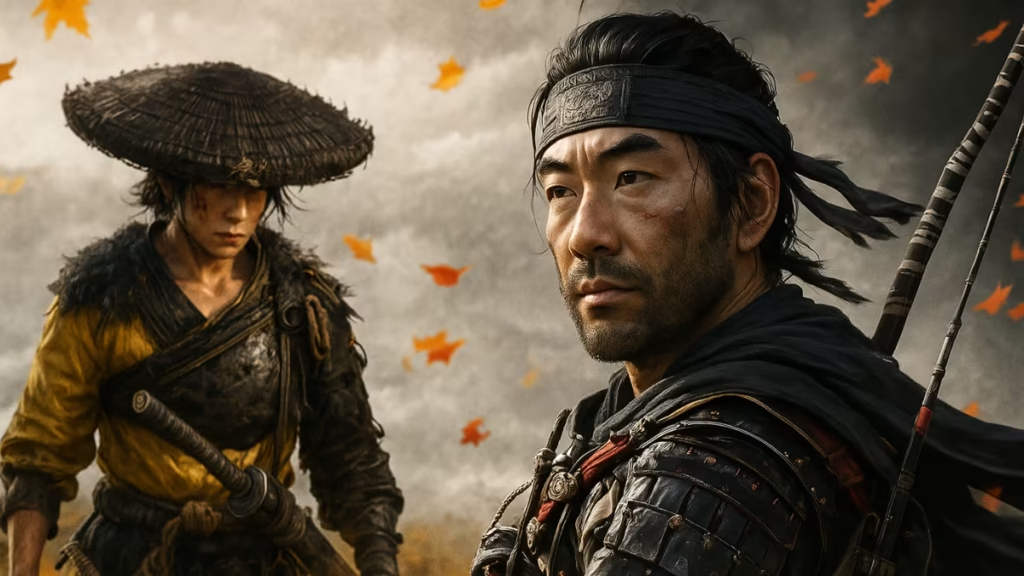When a new entry in a beloved series arrives, one of the most common questions fans ask is: Do I need to play the first game before jumping into the sequel? With Ghost of Yotei releasing in October 2025, many players are wondering if they should play Ghost of Tsushima first. Let’s break down the connections between the two titles, the story implications, and how much the earlier game matters for newcomers.

How the Two Games Connect
Despite being framed as a sequel, Ghost of Yotei is not a direct continuation of Jin Sakai’s journey.
- Ghost of Tsushima takes place in 1274 during the Mongol invasion of Tsushima, following Jin’s transformation from samurai to the Ghost.
- Ghost of Yotei begins in 1603, more than 300 years later, in the Edo period, with a completely new protagonist named Atsu, an Onna-musha warrior also referred to as Onryo, or “vengeful spirit.”
This time gap means Jin’s saga is remembered only as legend. Yotei is best described as a spiritual successor rather than a traditional sequel.
See also: Ghost of Yotei Review – A Brutal Samurai Epic of Vengeance and Redemption
Do You Need Jin Sakai’s Story Before Yotei?
If you’re playing purely for narrative reasons, you can dive straight into Ghost of Yotei without fear of being lost. Atsu’s tale is standalone: she seeks vengeance against the Yotei Six, the men responsible for slaughtering her family, as well as their leader, Lord Saitō.
By contrast, Ghost of Tsushima focuses on Jin Sakai’s struggle between upholding the honor of the samurai code and using dishonorable tactics to defend his homeland. The two games share thematic DNA—conflict between ideals and survival—but they don’t overlap in characters or events.
Gameplay and Mechanics
While the story connection is loose, there’s a clear lineage in gameplay:
- Both games feature rhythmic swordplay, stealth mechanics, and exploration rooted in Japanese landscapes.
- Ghost of Yotei adds new elements like dual blades, kusarigama, grappling hooks, and Watanabe Mode, which infuses stylized anime-inspired flair into combat.
- If you’ve already played Ghost of Tsushima, you’ll find yourself more naturally adjusted to stances, parries, and stealth tools.
So while not required, playing Tsushima can act as a training ground to make Yotei’s combat feel smoother from the start.
Easter Eggs and World-Building
Even though Jin Sakai himself won’t appear—he would be long gone by Yotei’s setting—Sucker Punch may sprinkle in references to Tsushima’s legacy: clan names, myths about the Ghost, or legendary weapons passed into rumor. These touches will resonate more if you’ve played the original, but they are not essential for enjoying Atsu’s journey.
Why You Might Still Want to Play Ghost of Tsushima
- For the Storytelling – Jin’s saga remains one of the best samurai narratives in gaming, balancing honor, sacrifice, and survival.
- For the Gameplay Foundation – Mastering Tsushima’s systems will give you a head start before tackling Yotei’s harder encounters.
- For the Experience – Ghost of Tsushima is still one of the most acclaimed open-world titles of the last generation, with breathtaking visuals and memorable characters.
You don’t need to play Ghost of Tsushima before Ghost of Yotei. Atsu’s journey stands alone, making Yotei easy to pick up. Still, playing Tsushima adds context, eases the gameplay learning curve, and deepens appreciation of the universe.
Fdaytalk Recommendation: If you have the time, play Ghost of Tsushima before Ghost of Yotei for the richer context and gameplay familiarity. If not, you can confidently start with Yotei and still enjoy its tale of vengeance without missing crucial story beats. Play Now!

